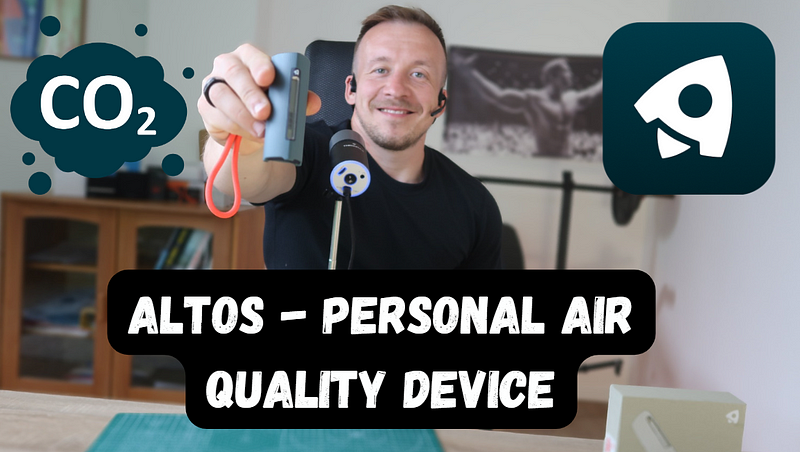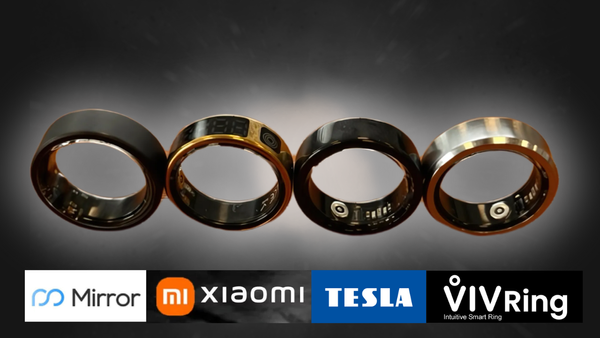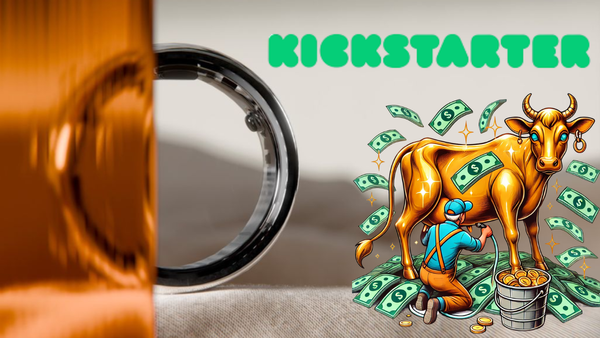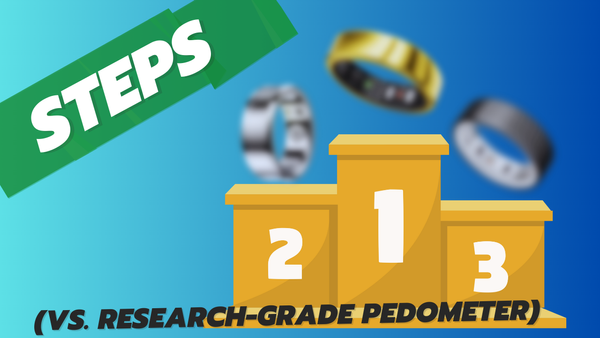New product Ultrahuman - 🏠 Home - Expectations
Ultrahuman has just launched a new campaign new device called Home. What can we expect?

I'll start with a bit of a broad brush. As a self-proclaimed expert on wearables and smart rings, ☁️ I get questions like "Oura ring or Ultrahuman AIR? But with this question, the questioner closes the door a bit on a full answer. Why?
- Oura Health makes a smart ring 💍. It does it the longest and currently the best. Period.
- Ultrahuman is building an ecosystem, a comprehensive multi-source data platform of which it is or will be a part:
- 💍 Ultrahuman AIR,
- 🍪 CGM (Continuous Glucose Monitor)
- 🩸 Blood Vision - blood tests
- 🏠 Ultrahuman Home
And I love the concept so much. Because UH connects internal & external metrics and influences that literally affect the quality of our lives. So how we sleep, how we move = ring💍, how we eat = CGM 🍪, what state our blood markers are in = blood test 🩸, what we breathe, what we expose ourselves to etc. = Ultrahuman HOME🏠.
But there is much more to what UH Home measures and we will look at that in this article.
🧰 Hardware
The Ultrahuman Home is by all indications a relatively small box that contains a mix of components and sensors. And according to the paper assumptions, it seems that it perhaps measures everything that can be measured.

UH Home has sensors that measure:
- 💨 Air quality
- 🌡️ temperature
- 💡 Light
- 🌫️ humidity
- 🔊 noise
Let's take a look at what these sensors are supposed to measure from the Ultrahuman app's point of view.
📱Software
One of the advantages of the ecosystem solution is that it is an all-in-one app, so it is still Ultrahuman.
According to the illustration photo, the 🔖 Zones tab (i.e. sharing data with friends - I talk about them here, among other things) will move somewhere and in its place will land the Home tab dedicated to the new device. This is illustrated in the image below:

In the header of this new tab you will see "Bedrooms". This means you can get more UH Home for your home and monitor metrics in multiple rooms. This is what the Space section is about.
🚪Space
Spaces, or Ultraspaces, are de facto designed for individual rooms, so they can typically be a living room, a children's room, a study and a bedroom. If you have more than one UH Home, you can track the 'Space Score' of each room in the app. Well, this score is actually made up of the following individual metrics.
🌡️ Temperature
Temperature is an important general parameter for well-being, and temperature in particular has a marked effect on sleep. An optimal temperature at night can help to improve sleep.

🌫️ Humidity
Humidity of the air we breathe is a parameter that, by optimising it, we can eliminate various difficulties. The standard recommended humidity is 40-60%. Outside this range, discomfort can occur in the form of eye and respiratory tract irritation, increased spread of viruses, etc.

🏭 PM - Particulate Matter
UH claims that the unique design of the box allows air to flow through its body and therefore trap particles. These can be pollen particles in the categories PM 1, PM 2.5 to PM 10. These are different classifications of particles according to their size in micrometres.
Different categories have different characteristics, but in general, long-term exposure to PM is associated with significant damage to the respiratory and cardiovascular systems and other chronic diseases.

Ultrahuman also talks about measuring formaldehyde. Formaldehyde (HCHO) is a colourless and flammable gas with a strong odour that can be smelled at very low concentrations. It is released from formaldehyde-containing materials (e.g. furniture) into the interior of homes and buildings and is then inhaled into the body. It then acts as a carcinogen in the body.

💨 CO & CO2
Other air quality parameters are carbon monoxide (CO) and carbon dioxide (CO2) levels.
Elevated levels of either can affect breathing and general health, disrupting vital body functions and potentially causing long-term problems. High CO2 levels also reduce concentration and cognitive performance, affect sleep, etc.
I have already discussed CO2 in the Altos Test:


💡Light
Light is an important factor in synchronising our body's internal clock and cells. The UH Home will be equipped with photodetection sensors for the UV light spectrum, monitoring UVA, UVB and UVC, as well as "blue light exposure sensors".
Based on the readings from these sensors, the UH will recommend light exposure and help create a better environment for sleeping and waking.

🔊Noise
Ultrahuman Home also has a microphone that listens to you :) to measure noise levels.

When placed in the bedroom, the microphone is also designed to measure snoring.

🔗 Connectivity
The Ultrahuman Home is said to be friendly with home hubs such as Google/Apple Home and Amazon Alexa. This could open the door to automation, such as running the air purifier at certain PM levels.

🧐 Conclusion
So what are the expectations? Great! I think the Ultrahuman team has set itself a very ambitious goal. To create a small, compact device that measures just about every conceivable environmental parameter.
And in the words of Horst Fuchs, that's not all. What I like most about it is how UH connects things and puts them in context. I mean (cliché alert 🚨), everything is connected to everything, and different factors affect different body metrics.
I've done a lot of experiments myself, like the effect of CO2 on my sleep phases. And I've used 2-3 different devices or apps. Ultrahuman is trying to bring correlation and causality (?) on a silver platter in one app, it's a revolution in self-measurement:

It's worth bearing in mind that this is a Kickstarter campaign, which is inherently risky. However, Ultrahuman has a history of successful campaigns, and UH Home is at least in the prototype stage.
The advantage of a Kickstarter campaign is also usually a lower price than the retail price. For Ultrahuman Home, it's all about the amount:
| Price Type | Price in GBP | Price in USD |
|---|---|---|
| Kickstarter | £319 | $399 |
| Retail | £439 | $549 |

There are other ways to support the campaign, including the Ring AIR ➕ UH Home campaign, which costs £718.
Of course, questions will arise, such as what about privacy? How accurate will the measurements be? How long will the sensors last? Will all the features be available immediately? UH is obviously aware of these questions and tries to answer at least some of them in the Kickstarter FAQ. For example, audio should be reported locally and the microphone can be disabled. As for the lifespan, UH is talking about at least a decade.
All in all, the UH Home is supposed to be a decent device and I'm really looking forward to testing it in the ecosystem with the Ultrahuman AIR ring. If you're interested in the test and the review and you're not subscribed to the newsletter, I ask you why?




